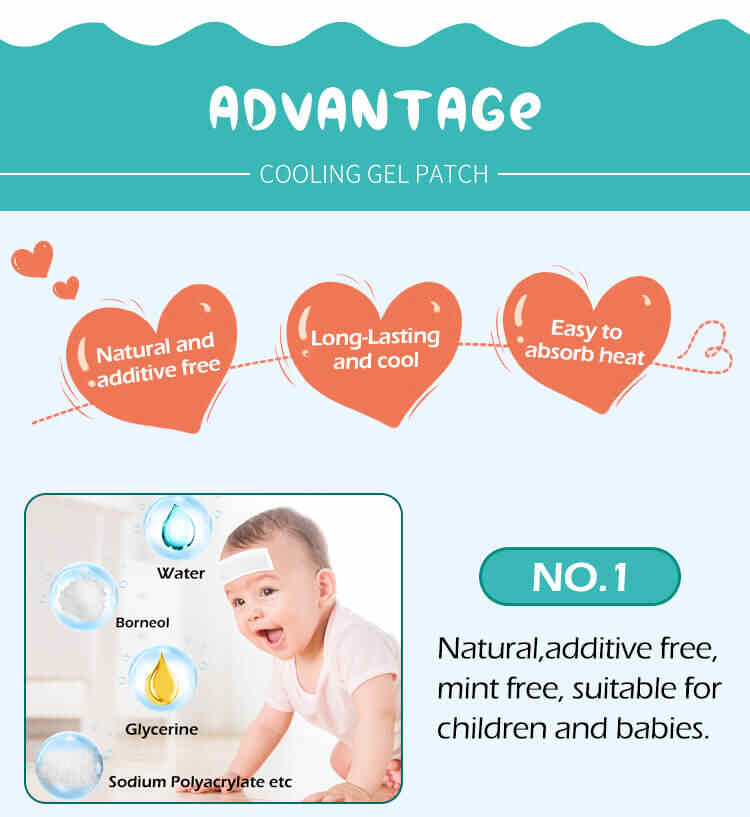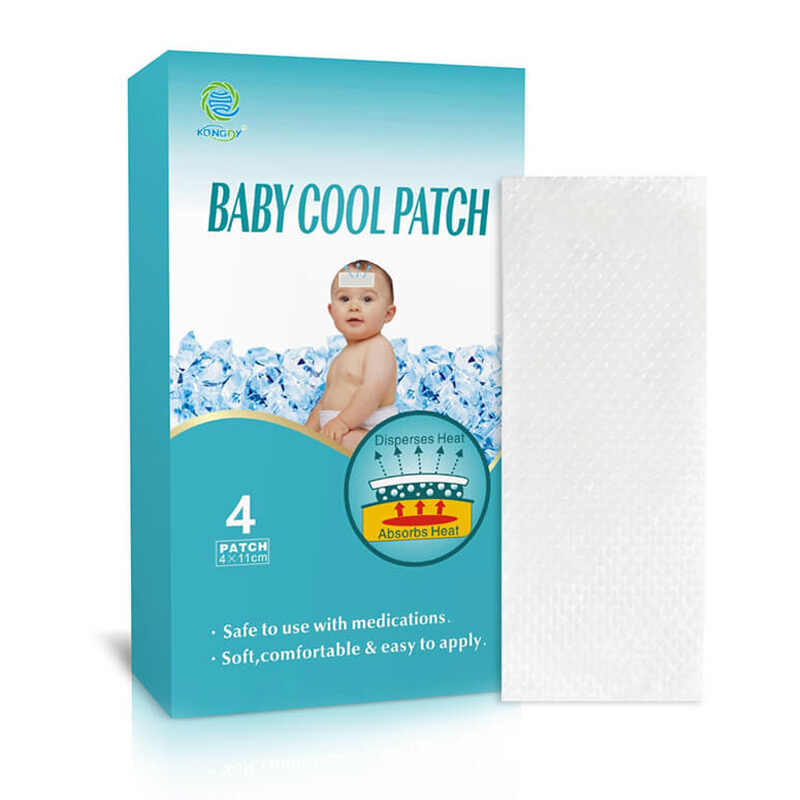Are Private Label Hydrogel Cooling Patches Cheaper Than Custom Ones?
The hydrogel cooling patch market has grown significantly in recent years, driven by increasing demand for fever relief, sports recovery, skincare, and headache management products. With this growth, brands face an important decision when working with a hydrogel cooling patches manufacturer or hydrogel cooling patches OEM:
Should they choose Private Label hydrogel cooling patches or invest in Custom hydrogel cooling patches?
From a cost perspective, many businesses assume that private label options are always cheaper — but the reality is more nuanced. The difference in cost depends on production scale, development needs, branding goals, and market positioning.
In this detailed guide, we will explore the cost differences, advantages, and strategic considerations of private label vs. custom hydrogel cooling patches, and how a hydrogel cooling patches supplier can help you make the most cost-effective choice.

1. Understanding the Two Approaches
1.1 What Are Private Label Hydrogel Cooling Patches?
Private label products are pre-formulated and pre-designed hydrogel cooling patches manufactured by an OEM. You simply apply your brand name, logo, and packaging design, and they’re ready for market.
Key features:
Pre-existing formula and design
Minimal product development time
Often ready for production immediately
Lower upfront costs
1.2 What Are Custom Hydrogel Cooling Patches?
Custom hydrogel cooling patches are designed according to your specifications. This can involve creating a new formula, adjusting gel properties, selecting different materials, or designing unique packaging to match your brand identity.
Key features:
Fully tailored formula and features
Unique packaging design
Requires R&D, testing, and sometimes regulatory approvals
Higher initial investment but greater product differentiation
2. Are Private Label Hydrogel Cooling Patches Cheaper?
2.1 Initial Development Costs
When working with a hydrogel cooling patches OEM, private label products generally cost less to develop. This is because:
The formula is already tested and approved
No additional R&D is required
Production molds and packaging templates are already available
In contrast, custom hydrogel cooling patches require investment in:
Research & formulation
Prototype testing
New packaging design and tooling
Verdict:
Private label options have significantly lower initial development costs.
2.2 Unit Production Costs
Private label patches often have lower per-unit production costs at small to medium order volumes because:
OEMs produce them in large batches for multiple clients, lowering raw material costs
Standardized production reduces changeover time and labor costs
However, for large-scale orders (e.g., millions of units annually), custom hydrogel cooling patches can be competitively priced — especially if you standardize production once your custom formula is finalized.
Verdict:
Private label is usually cheaper for low-to-medium volumes; custom becomes more competitive at high volumes.
2.3 Time-to-Market Costs
Private label products can be produced and delivered faster, which means you start generating sales sooner. A shorter time-to-market:
Reduces warehousing costs
Minimizes delays in market entry
Allows earlier ROI
Custom products take longer due to R&D, testing, and regulatory steps, which can delay revenue.
Verdict:
Private label wins in terms of speed, which indirectly reduces opportunity costs.
2.4 Branding and Marketing Costs
Private label hydrogel cooling patches are more generic, so you may need to spend more on marketing to differentiate your brand from competitors using the same product base.
Custom hydrogel cooling patches, by contrast, offer unique selling points (USPs) built into the product itself, potentially lowering the long-term marketing spend needed to stand out.
Verdict:
Private label saves on manufacturing, but custom can save on marketing over time.
2.5 Long-Term Cost Efficiency
Over the long term, custom hydrogel cooling patches may deliver higher margins because:
Unique features can justify higher retail prices
Stronger brand loyalty reduces churn
Less price competition with identical products
While private label options are cheaper initially, they can lead to thinner margins in competitive markets.
Verdict:
Private label is cheaper upfront; custom may be more profitable over years.
3. Factors That Influence Price Differences
3.1 Minimum Order Quantities (MOQs)
Private Label: Lower MOQs, often starting at a few thousand units.
Custom: Higher MOQs due to the costs of setting up unique production lines.
3.2 Formula Complexity
Custom patches with specialized cooling durations, added herbal extracts, or enhanced adhesion will cost more to produce.
3.3 Packaging Type
Standard OEM packaging is cheaper, while custom die-cut boxes, foil packs, or sustainable materials add cost.
3.4 Certification and Compliance
If your market requires special certification (e.g., FDA, CE, ISO), the OEM may already have compliant private label formulas, avoiding additional testing fees.
4. How to Decide Which Option Is Right for You
When choosing between Private Label hydrogel cooling patches and Custom hydrogel cooling patches, ask yourself:
What is my budget for initial product development?
How quickly do I need to launch?
How competitive is my target market?
Do I need unique features for differentiation?
Can my expected sales volume justify custom production costs?
5. Role of the Hydrogel Cooling Patches OEM and Supplier in Cost Control
A reliable hydrogel cooling patches manufacturer or supplier can help reduce costs in both models by:
Negotiating bulk raw material prices
Optimizing production schedules
Offering design and packaging in-house
Providing regulatory support to avoid costly compliance delays
The best OEMs give transparent cost breakdowns so you can see how private label and custom options compare.
6. Pros and Cons Summary Table
| Aspect | Private Label Hydrogel Cooling Patches | Custom Hydrogel Cooling Patches |
|---|---|---|
| Initial Development | Low cost | Higher cost |
| Unit Price (Small Vol.) | Lower | Higher |
| Unit Price (High Vol.) | Moderate | Competitive |
| Time to Market | Fast | Slower |
| Differentiation | Low | High |
| Long-term Profit | Moderate | High |
7. Final Verdict
So, are private label hydrogel cooling patches cheaper than custom ones?
Yes — in most cases, private label options have lower upfront and short-term costs, making them ideal for startups, small businesses, or brands testing a new product line. They offer quick market entry with minimal risk.
However, for established brands aiming to build a distinctive market presence and willing to invest in long-term growth, custom hydrogel cooling patches can deliver greater profitability and brand strength over time.
The most cost-effective solution often comes from working closely with a hydrogel cooling patches OEM that offers both private label and custom solutions, allowing you to start small and transition to a custom product once your sales volume and brand recognition grow.
8. Related Questions and Answers
Q1: Can I start with private label and later switch to custom hydrogel cooling patches?
A1: Yes, many brands begin with private label for market testing and move to custom once sales justify the investment.
Q2: Are private label hydrogel cooling patches lower quality than custom ones?
A2: Not necessarily. Quality depends on the hydrogel cooling patches manufacturer — reputable OEMs maintain high standards for both options.
Q3: Do private label patches require fewer certifications?
A3: Often yes, since the OEM’s existing formula may already meet regulatory standards in your target market.
Q4: How much more expensive is custom hydrogel cooling patch development?
A4: It varies widely, but custom R&D can cost 20–50% more initially, depending on formula complexity and testing requirements.
Q5: Which option is better for competitive online marketplaces?
A5: Custom products give you stronger differentiation, but private label is better for rapid entry and lower risk.






